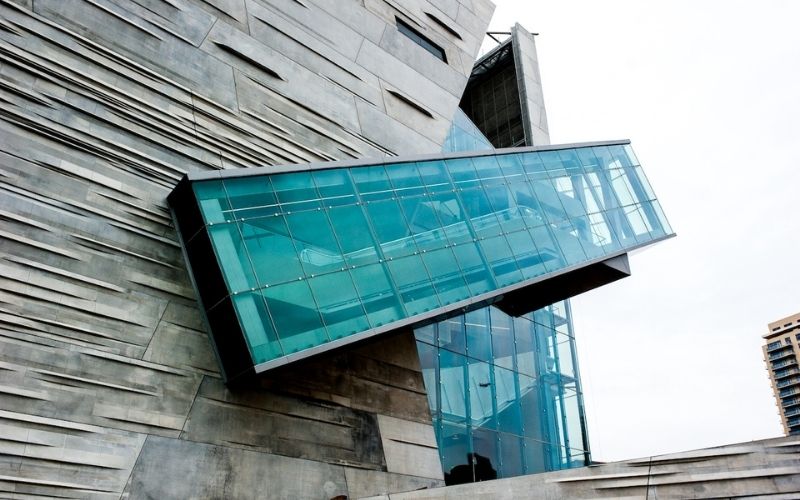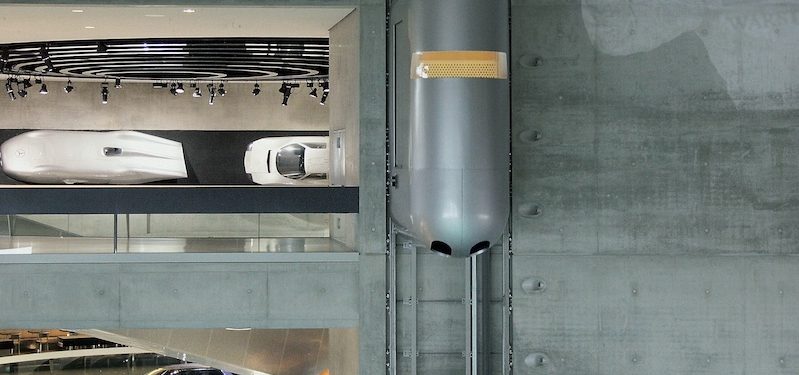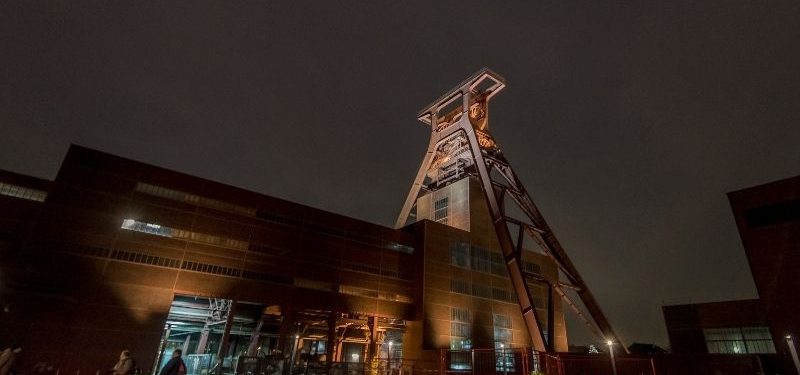Ensuring mobility in museums with diverse, customized solutions
Museum visitors want to enjoy an uninterrupted experience. Long waits at elevators, levels that are difficult to access or confusing, and poorly marked mobility solutions are big no-nos for museums. We check out museums with mobility solutions that ensure seamless connectivity with an extra flair.

“Where’s the elevator?” you may ask on your next museum trip. In museums, elevators can be so subtly integrated that you have to ask where they are. Sometimes, however, they’re easy to find, because they are works of art themselves. Either way, elevators and escalators play an important role in ensuring that all visitors can journey through the building or site – and some mobility solutions even accentuate the exhibitions.
Mercedes-Benz Museum, Stuttgart, Germany
A museum highlighting the history of mobility innovation provides the perfect background for some other cool, high-tech mobility solutions. These futuristic, pod-like elevators perfectly match the concept behind Mercedes-Benz automobiles – blending ergonomics and cutting-edge technology to get visitors from A to B in style with no back up in traffic!




Perot Museum of Nature and Science, Dallas
As a space to interactively explore the interdependence of natural systems, the marked architecture of the museum perfectly symbolizes its purpose. The architect opened up a corner of the building to let in light. Here, an exterior, glass-enclosed escalator, connects the two levels, blurring the division between the grounds and the museum interior. Additionally, the passenger elevator cabins with glass walls encourage visitors to keep their eyes open to thematic connections between levels.



Amba Aradam/Ipponio metro station, Rome, Italy
In destinations like Rome, tourists stream through the city on the trail of ancient history. It’s essential that mobility solutions seamlessly integrate with the sites, ensuring easy access but protecting the heritage. At the Amba Aradam/Ipponio metro stop, passengers disembark at the ruins of 1000-year-old Roman barracks. The station is part mobility hub, part museum. Here, 3 elevators and 14 escalators efficiently transport visitors to and through the ruins. Similarly, at the Fori Imperiale station, 16 escalators and 8 elevators lead from the station to the Colosseum, transporting passengers back in history.

Mundo Estrella Beer Museum, A Coruña, Galicia, Spain
Beer aficionados, but also technology and engineering buffs, delight in the recently opened museum in Galicia dedicated to a popular brewery. In short, they don’t want to miss a thing. The 2 escalators, uniquely customized for the building, have a support structure above 137º and transparent glass panels that allow visitors to enjoy the view of the exhibitions from many perspectives.

Zeche Zollverein, Essen, Germany
This UNESCO World Heritage Site uniquely combines the region’s coal mining history with its contemporary transformation into an arts region. The 2 bright red, “burning” escalators are the tallest freestanding escalators in Germany. Works of art themselves, the escalators’ weatherproof and energy-efficient design ensures uninterrupted access to the building. A special treat during a visit after dark!



Archaeological Museum, Milan, Italy
While museum elevators are often artistic, educational, or even showy, sometimes subtlety is what’s needed. Located in the ex-convent of the Monastero Maggiore, the Archaeological Museum selected a home lift as a discrete elevator solution. It transports visitors between levels without dramatically altering the historic structure.

Mobile works of art
Mobility solutions can reflect and refine the environment of the museum. At the Museum of Islamic Art in Doha, Qatar, no opportunity is lost to replicate the beautiful mosaic patterning common to the region. The museum is a work of art in itself, and so are the elevators. The Guggenheim Museum, Bilbao, Spain, is famous for its Frank Gehry architecture. The museum’s interior, including the elevator shafts, reflects the exterior design seamlessly.

Museums open new worlds for everyone
No matter where in the world, or what theme or exhibition is displayed, a museum must ensure access for all visitors. The UNESCO World Heritage Site, the Palace Museum in the Forbidden City1, in Beijing, China, presents a particular challenge. Since the 2008 Olympics, the site has continuously built-in more accessibility for the mobility challenged visitors – adding ramps, rubber belts, and elevators. Similarly, the soaring design of the Museum of Tomorrow2 by Spanish Architect Calatrava in Rio de Janeiro, Brazil, is made more accessible by the inclusion of tactile floors, as well as dioramas, ramps, wheelchairs, and elevators.

Mobility solutions top up any museum
The diversity of mobility solutions compliments the diversity of museums from around the world.



Sources
Image Credits
Perot Museum of Nature and Science, image by Joe Mabel, taken from commons.wikimedia.org, Attribution-ShareAlike 3.0 Unported (CC BY-SA 3.0)
Elevator at Perot Museum of Nature and Science, image by Patsy, taken from flickr, Attribution-NonCommercial 2.0 Generic
The Archaelogical Museum, Milan, image by Orledio, taken from commons.wikimedia.org, Attribution-ShareAlike 4.0 International
The Guggenheim Museum, Bilbao, image by Wolfgang Pehlemann, taken from commons.wikimedia.org, Attribution-ShareAlike 3.0 Germany
Museum of Tomorrow, image by paulared, taken from pixabay.com
Niterói Contemporary Art Museum, Brazil, image by Rosino, taken from commons.wikimedia.org, Attribution-ShareAlike 2.0 Generic
Royal Ontario Museum, Canada, image by Michael Lee-Chin Crystal, taken from flickr, CC0 1.0 Universal
Louis Vuitton Foundation, France, image by Fred Romero, taken from flickr, Attribution 2.0 Generic

